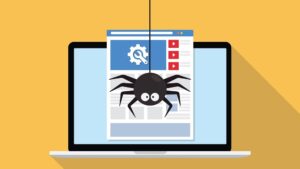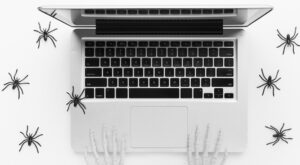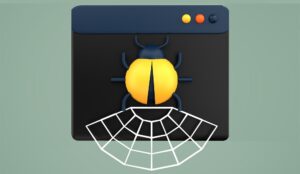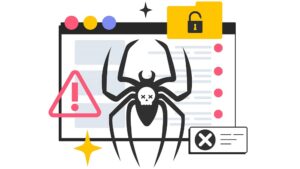What is a web crawler? How to build a web crawler or crawling robot?
What is a crawler or web crawler? Have you ever wondered how Google understands the field in which each site is located? Have you ever wondered why different sites have different rankings in Google searches? Have you ever wondered what system Google uses to experience its users better? Does Google have a special audit at all? How does it know that a piece of content is of high value?
In this context, we will talk to you about Google inspectors. Inspectors are known as crawlers, and their job is to examine the content of sites. If you know a little about SEO, you have heard of the names web crawler, crawler robot, and web crawler. These robots enter different sites and examine the content of each site. The more your site is loaded, the more hours it spends on it, which means it has more value. If you want to learn about the mechanism of crawling robots and finally learn how these robots are made, be sure to follow this content to the end.
What is a Web Crawler?
Web Crawlers are a series of programmed robots all over the Internet. The job of these robots is to enter various sites and start analyzing the content of the sites. They pay attention to a series of parameters to evaluate sites and pages. This means that if you pay attention to the parameters necessary to the crawler robot when writing the content of your sites, the likelihood of your visibility in Google search will also increase. Ultimately, you will also have an increase in input from Google. In addition to analyzing the content, it also clicks on the links of each page and enters them. This is where you realize the importance of internal and external linking.
After opening the links on the page, the content inside them is also analyzed, which is repeated repeatedly. The constant presence of a robot on your site makes you get better rankings in Google searches. The purpose of their presence is to index the site and the pages of the sites with words related to their field of work and, of course, the field they have written about in their blogs. The crawler robot helps users reach their search goal faster and come across sites that have better discussed the topic they are interested in. In short, web crawlers are site identification robots useful for both sites and users.
What is the difference between a web crawler and a spider?
There is another concept called a spider that you should be familiar with before continuing. Spiders are Google’s crawler robots, which are a subset of crawlers. Web crawlers are commanders, and when they enter the site, they decide which part each spider should examine for the spiders. For example, crawlers command the spiders to open what type of links to open and which part of the content to pay more attention to.
You should know this concept because many people consider crawler robots to be spiders, which is true. However, since web crawlers are commonly called crawlers, we will talk more about them. The impact of crawler robots on internal and external SEO is very high, and you should do your best to keep them on your site as much as possible. You should also optimize your site for more and easier web crawlers.

What are the functions of a crawler?
Before we go further into the discussion and learn how to build a crawler, we want to talk to you about its functions. We will tell you what functions these crawlers have and how we should make them. Crawlers work by downloading by downloading and categorizing exists on the Internet, and categorizing this work is indexing. The crawler’s ultimate goal is to extract the content of each page and understand what keyword each page is about and what field it is about.
A crawler is like an expert who helps you get content tailored to your needs. It enables you to find content tailored to the needs of the word you searched for according to the words you searched for. Due to its type of function, there are also some significant challenges. For example, crawlers must fully understand the meaning of each piece of content and separate higher-quality content from others.
This is a challenging task that crawlers identify based on repeating a series of words. Also, to index other pages, they open links and enter other pages. Then, they start indexing these pages in the same way. One of the most important reasons for site pages not being indexed can be a problem with web crawlers not crawling your site pages.
How does a web crawler work?
What should be done to check the content and all the pages on the Internet? This is impossible to do manually; thousands of sites are created daily, and hundreds of thousands of new pages and blogs are written. This is where crawlers and crawlers come into their own. Their job is to make an impossible task possible in a very short time. Crawlers start their work from known URLs on each site and page. Then, they recognize each URL, open links within it, and index them. They do this repeatedly until no more links are left on that site. The point is that they have specific criteria for checking sites. We will introduce some of these criteria to you below.
The page has high authority.
When crawling between pages, the crawler robot pays attention to things such as the authority of your site page. The meaning of authority is that the page it checks has a higher level of authority if it has a higher level of visitation or if other pages link to it. It should also be noted that the more traffic a site has, the higher the authority that page will have. These things cause the crawler robot to care more about that page and generally assign better rankings to that particular page. Page authority and domain authority have a significant impact on SEO and crawling by crawlers.
Therefore, for your page to receive high authority, you should give links to your page from pages with more visits. The next point is that if other sites with high authority link to your page, it is likely that crawlers will stay on your page longer, and as a result, it will be better indexed. This point shows you how vital both internal and external linking are. There are many ways to increase the speed of a site’s index, and one of the most important ones is linking.
Revisiting a page
This visit is essential. When a crawler robot re-examines a page on the site, it causes that page to rank higher. So, internal links increase the likelihood of crawlers visiting a specific page. As the number of crawler robots visiting your site pages increases, the overall credibility of your site will gradually increase. Ultimately, any page or content you create will be indexed much easier and more efficiently.
Robots.txt file
A crawler robot must find paths when it wants to enter your site. This file tells the crawler robot how to crawl and their paths. The more precisely this file specifies the paths, the faster and the more pages of your site the crawlers will eventually examine. The work of the Robots.txt file helps you to identify and index your pages. In this file, you can mention which pages you want to index and which pages you wish to block from being indexed. This filtering helps you finally take complete control of the crawlers.

Types of Google Crawlers
As we mentioned, there is a lot of data that you can access by searching on Google. According to Google’s data, by 2022, 1 trillion gigabytes of content will have been indexed on Google. It would be impossible to load and maintain this data volume without crawlers. So crawlers should be categorized based on what they do. There are four essential types of crawlers, each performing a specific task.
What is a web crawler?
General crawlers
The most important types of crawlers are beneficial and provide you with a lot of data. This type of crawler collects an essential part of the data. This crawler robot collects the general data that exists. Usually, when we talk to you about crawlers, we discuss this type of crawler more. Search engines like Google Bot get most of their data through general crawlers.
Backlink crawler
These crawlers are significant; they check the backlinks on different pages. These crawlers evaluate the external links that have been given to your page. The more these links are, the better your site’s pages will rank. More external links will increase Google’s trust in your sites, and ultimately, your site’s SEO will improve.
Media Crawler
Media crawlers are a group of crawlers that pay attention to photos, videos, podcasts, etc. They are responsible for checking these contents. That is why they say content such as photos and videos is essential and dramatically impacts your site’s SEO.
Content crawler
Content crawlers focus specifically and solely on text content, while general crawlers focus on all parts of the site. Content crawlers only check content such as blogs, articles, and news. They find and examine this content with great accuracy.

How to Build a Web Crawler
In this section, we will discuss building a web crawler. You can create crawlers using various methods to extract the data you want. However, one of the most important and, of course, the most widely used methods of making a crawler is Python programming. If you plan to create multiple crawlers for the pages of a specific site, use the process we will tell you below. In this method, you create numerous spiders or crawlers for a site or subdomains of a site.
Adnans-MBP:ScrapyCrawlers AdnanAhmad$ scrapy startproject olx
New Scrapy project ‘olx’, using template directory
‘//anaconda/lib/python2.7/site-packages/scrapy/templates/project’, created in:
/Development/PetProjects/ScrapyCrawlers/olx
You can start your first spider with:
cd olx
scrapy genspider example example.com
After you have created this crawler, you can make the oxl project by executing the following command. This will create the following information for creating crawlers.
scrapy startproject olx
After this, you should go to the created folder and run a command to generate the first crawler. Here, you should make the domain name and the site for which you want the crawler to run.
Adnans-MBP:ScrapyCrawlers AdnanAhmad$ cd olx/
Adnans-MBP:olx AdnanAhmad$ scrapy genspider electronics www.olx.com.pk
Created spider ‘electronics’ using template ‘basic’ in module:
olx.spiders.electronics
If you open the electronics.py file, you will see the following code:
# -*- coding: utf-8 -*-
import scrapy
class ElectronicsSpider(scrapy.Spider):
name = “electronics”
allowed_domains = [“www.olx.com.pk”]
start_urls = [‘http://www.olx.com.pk/’]
def parse(self, response):
pass
As you can see, there is a scrappy class in the ElectronicsSpider file. Spider. You can change the name of your crawler in the name field. It will be used when you run your robot. The allowed_domains field determines which domains are available to this crawler. Also, start_urls is where the initial URLs are stored. These initial URLs are handy when the robots start crawling.
from scrapy.spiders import CrawlSpider, Rule
from scrapy.linkextractors import LinkExtractor
class ElectronicsSpider(CrawlSpider):
name = “electronics”
allowed_domains = [“www.olx.com.pk”]
start_urls = [
‘https://www.olx.com.pk/computers-accessories/’,
‘https://www.olx.com.pk/tv-video-audio/’,
‘https://www.olx.com.pk/games-entertainment/’
]
rules = (
Rule(LinkExtractor(allow=(), restrict_css=(‘.pageNextPrev’,)),
callback=”parse_item”,
follow=True),)
def parse_item(self, response):
print(‘Processing..’ + response.url)
To make it easier for crawlers to crawl between different pages, you should create a subclass instead of a scrappy spider. You can create a very efficient crawler and crawler using the codes and the method we told you about. Programming with CharGPT can help you do this. Note that you can make this robot more advanced, but we tried to explain the part that will get you started in this content.
The difference between crawling and indexing
So far, you have learned about how to index sites using crawlers. You also learned about the mechanism of the crawler robot and how to build a crawler robot. In this section, we will discuss the difference between crawling and indexing. Crawling is a step before indexing; at this stage, the types of crawlers we told you about start crawling. Then, they begin collecting information about each link ope,n all the links and collect information about it.
Collecting information about each page creates a site map, which prepares everything for indexing the pages. Then, all the information the crawler robot has collected from the pages is placed in an extensive web index database. In this way, whenever a user searches for a specific topic on Google, Google determines what content and page it should publish for each user. As a result, crawling is the stage in which information collection occurs. Indexing is the stage in which information is stored and categorized based on the search that is performed.

The Difference Between Web Crawling and Web Scripting
So far, you have become familiar with indexing and crawling. In this section, we will discuss web crawling and scripting. You should remember that Google does not have a crawler robot, and programmers can create crawlers. As we taught you in the tutorial on creating a crawler robot above, the purpose of making these robots can be very different. This process is called web crawling if the Google crawler robot enters the site.
This process is called web scripting when a programmer creates a crawler robot that enters the site without the site owner’s permission. Web scripting may be used solely for malicious purposes or to collect information from specific pages. This is if web crawling gathers information and reviews sites to help the user.
Next, you should pay attention to Google’s crawler robot, which chooses its path through the robots in web crawling. Txt file. Choosing this path will not put pressure on your host. But the written crawler robot does not care about your host in web scripting. It simply tries to get the information it wants in any way it likes. Often, programmers misuse this type of robot to eliminate their competitors, which may also be problematic. For this reason, online business owners should be careful about their site’s spam score.
The impact of web crawlers on SEO
Crawlers and crawlers significantly impact SEO; an SEO should consider these things. One of the most essential effects crawlers have on SEO is making your pages more susceptible to indexing. The more pages on your site are indexed, the more likely your site will rank better. In recent years, it has become much more challenging to rank different pages on Google due to the increased competition between sites. Of course, the search volume for various topics has also increased due to people’s interest in this new space. You need to make indexing pages easier, which is impossible unless you optimize your site for crawler entry. The better you are at this, the more likely your site’s SEO will improve, and you will receive more appropriate rankings.
Summary
Web crawlers are one of the most essential robots used by search engines. Utilizing these web crawlers, search engines examine various information on sites and understand the content of each page. Web crawlers make it easier for users to reach their needs. If they don’t exist, you won’t be able to find the page that answers your question after searching Google. In this context, we’ve done our best to share helpful information with you about web crawlers, how they work, and even how to build a crawler robot. We hope this article has helped you become thoroughly familiar with this topic.